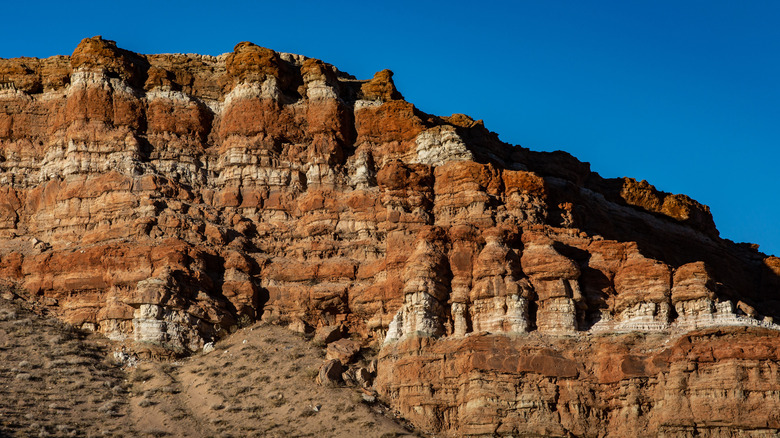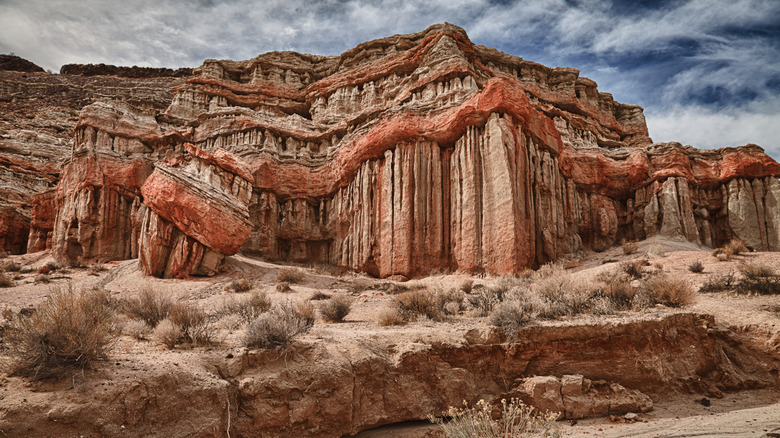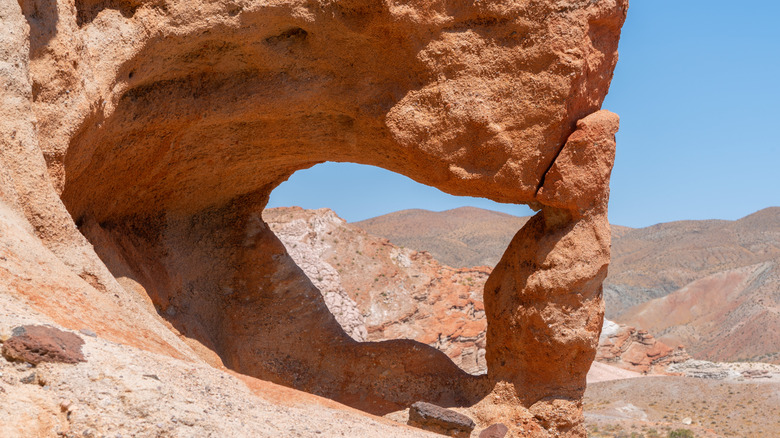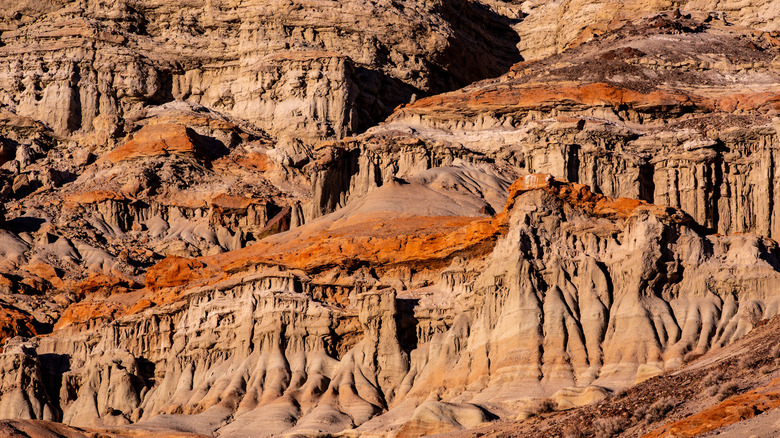California probably isn’t the first place that comes to mind when you think of red rock deserts. You’re more likely thinking of Arizona’s archaeological wonders at Wupatki National Monument, Utah’s impressive Capitol Reef National Park, or even Nevada’s Gold Butte National Monument. But the Golden State, true to its nature, has it all, including a red rock utopia that feels more like Mars or Venus. Red Rock Canyon State Park, with its sandstone cliffs, pinkish-red badlands, and rugged desert terrain, is one of California’s most underrated natural gems. Tucked away between Sequoia National Forest’s majestic greenery and the Mojave Desert’s barren landscapes, the state park boasts striking scenery that rivals the Southwest’s most famous red rock destinations. And while the state is known for its coastal redwoods and rolling vineyards, Red Rock Canyon is a stark contrast. It’s 27,000 acres of campers’, hikers’, rock climbers’, and desert lovers’ paradise, and the adventures here simply do not end.
Red Rock Canyon’s cliffs and badlands took millions of years to form. About 10 million years ago, this area was a vast valley where floods carried sediment from the Sierra Nevada and El Paso Mountains into an ancient lake. Over time, the heavy sediment compressed into sandstone, while volcanic eruptions left behind ash and basalt residue. Tectonic shifts along the Garlock Fault tilted the rocks, which exposed layers of geological evolution. The park is also home to animal and plant fossils — saber-tooth cats, horses, and palms once thrived here.
Despite its remote setting, getting to Red Rock Canyon State Park is surprisingly easy. From Los Angeles, drive inland toward Lancaster, then follow Highway 14 north — you’ll reach it in about two hours. The small town of Cantil serves as your gateway to the state park.
The best time to go to Red Rock Canyon State Park
Red Rock Canyon is best enjoyed when the desert heat isn’t seemingly trying to melt you. Summer temperatures here can be brutal, with little to no shade, so plan your trip between fall and spring when the weather is cooler. Even then, the desert can be unpredictable, with warm days, chilly nights, and sudden wind gusts. Check the forecast, bring a jacket just in case, and always carry more water than you think you’ll need. The sun is relentless, so don’t forget sunscreen, a hat, and sunglasses.
There are no restaurants, stores, or snack stops inside the park, so you have to bring your own food. Pack enough for your entire stay unless you want to leave the park every time you get hungry. Proper hiking shoes are a must — the area is rocky, uneven, and full of loose sand. You’ll be climbing over boulders, walking through canyons, and traversing ridges, so dress the part.
Staying the night at Ricardo Campground is an experience in itself. Some sites are located beneath massive cliffs, while others are surrounded by Joshua trees or open to the sky. It’s first-come, first-served, so don’t expect a guaranteed spot, especially on weekends in spring and fall. With a total of 50 campsites offering fire rings, picnic tables, potable water, and pit toilets, the campground provides the essentials for a comfortable stay. However, there are no showers, RV hookups, or dump stations, and there’s a 30-foot limit for those coming with their trailers. In any case, the starry nights make the whole camping trip worthwhile.
Chase the desert dust on foot at Red Rock Canyon
Climb higher than your fears at the state park
If you’re into rock climbing or bouldering, Red Rock Canyon is the place to be. Whether you’re a newbie or a pro, you’ll find something to challenge you. The canyon’s signature Aztec sandstone is perfect for climbing. The routes here range from mellow sport climbs to tough, multi-day ascents. Some of the best spots are at Calico’s 1 and 2 and Sandstone Quarry, where the rock is ideal for sport climbing. But don’t let the sandy nature of some rocks fool you — always approach with caution.
The main escarpment has higher-quality, solid sandstone that’ll test your skills. But you can always opt for short routes that take around an hour. No matter what you end up choosing, you’ll be treated to phenomenal panoramas of the canyon’s topography. Do keep in mind that after a rainstorm or snow, give the rocks a day or two to dry out before climbing for safety reasons. Also, keep an eye out for rattlesnakes and other critters — after all, you are in their territory.
If you’ve been thinking this whole time that Red Rock Canyon State Park looks familiar, it’s because it’s been featured in countless movies — classics like “Jurassic Park” and “The Big Country” have been shot here. This is your chance to see one of the most iconic filming locations in Hollywood history. It may fly under the radar compared to the Bronson Canyon Caves in L.A. County, but it’s just as legendary.





